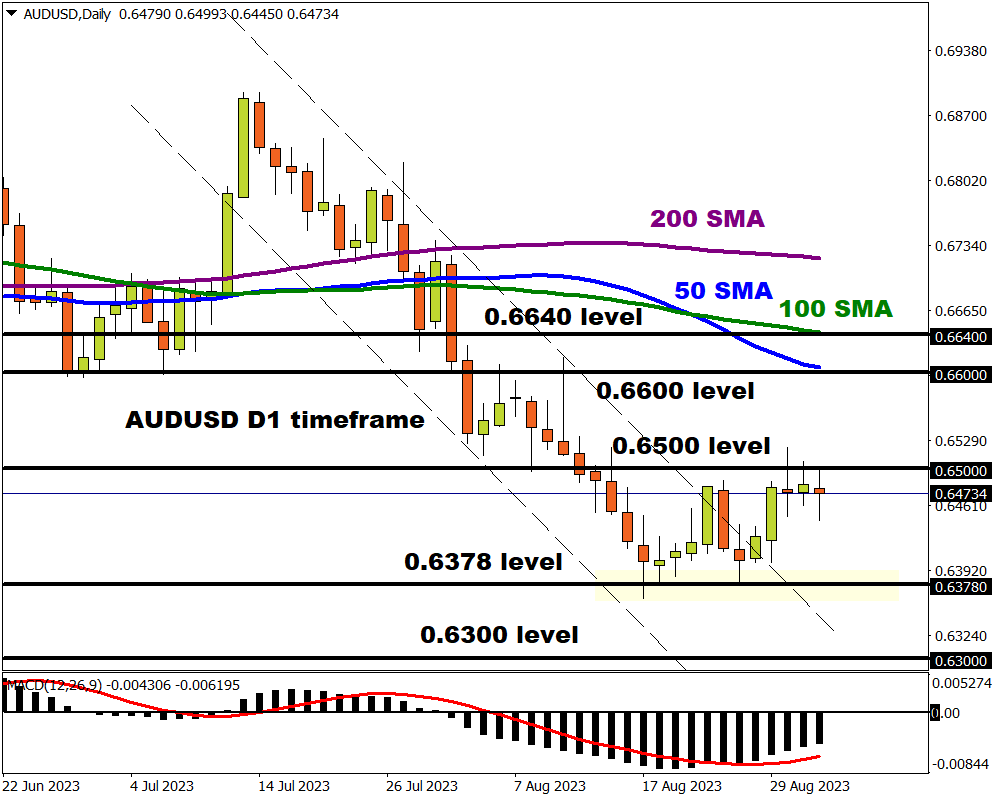An air of anticipation gripped financial markets on Friday morning as the countdown to the pivotal US jobs report ticked down.
Even with the pent-up tension ahead of this major event, some investors already have their ears to the ground on what’s to come in the week ahead. Despite the holiday-shortened week in the United States, be prepared for potential market volatility thanks to the barrage of top-tier economic releases across the globe.
Monday, September 4
- US markets closed – Labour Day holiday
Tuesday, September 5
- AUD: RBA rate decision
- CHN: China Caixin services PMI
- EUR: Eurozone S&P Global Services PMI, ECB President Lagarde speech
- JPY: Japan household spending
- USD: US factory orders
Wednesday, September 6
- AUD: Australia Q2 GDP
- CAD: Canada rate decision
- EUR: Eurozone retail sales, Germany factory orders
- USD: Federal Reserve Biege Book, Fed speech
Thursday, September 7
- AUD: Australia trade, RBA Governor Philip Lowe speech
- CHN: China trade, forex reserves
- EUR: Eurozone GDP, Germany industrial production
- USD: US initial jobless claims, Fed speech
Friday, September 8
- CAD: Canada unemployment
- EUR: Germany CPI
- JPY: Japan GDP
- USD: US wholesale inventories, consumer credit
Here are 3 reasons why we are focusing on AUDUSD for the coming week:
RBA policy meeting
The Reserve Bank of Australia is expected to leave interest rates unchanged at its September 5th policy meeting, keeping the cash rate at 4.10%.
It is worth keeping in mind that the RBA has embarked on an aggressive hiking campaign, lifting rates by a whopping 400 basis points since April 2022. However, the recent influx of soft economic data, a sharp slowdown in consumer prices, and disappointing job numbers have fuelled bets that the RBA could be finished with rate hikes in 2023 with the next move a cut.
- The Aussie is likely to weaken if the RBA strikes a dovish tone and signals that it has no intentions of raising rates this year.
- Should the RBA sound more hawkish and express intentions to keep rates higher for longer, this could push the Aussie higher.
Australia GDP report
All eyes will be on Australia’s Q2 GDP report published on Wednesday 6th September.
Markets forecast the economy to expand 1.8% in the second quarter of 2023 compared to the 2.3% seen in the first quarter. However, quarter-on-quarter growth is seen jumping 0.4%, higher than the 0.2% pace seen in Q1. Overall, the combination of high inflation and high-interest rates is expected to hit demand, weighing on economic growth.
- A weaker-than-expected Q2 GDP report is likely to cement expectations around the RBA already ending its hiking cycle, dragging the AUDUSD lower.
- Should the GDP report print above market forecasts, this may offer support to the Aussie as rate hike bets are revived.
AUDUSD double bottom pattern
The AUDUSD could be gearing up for a major move, especially after creating a double bottom pattern on the daily timeframe. A rebound could be around the corner, but this could be influenced by fundamental forces.
In the meantime, prices trading within a range with support at 0.6378 and resistance around 0.6500. Interestingly, the currency pair is trading well below the 50, 100, and 200-day SMA while the MACD also trades to the downside.
- A solid breakout and daily close above the 0.6500 level could signal the arrival of bulls with the next key levels of interest found at the 50 and 100-day SMA’s.
- Should prices remain depressed and sink below 0.6378, this may inspire a decline towards 0.6300 and lower.
